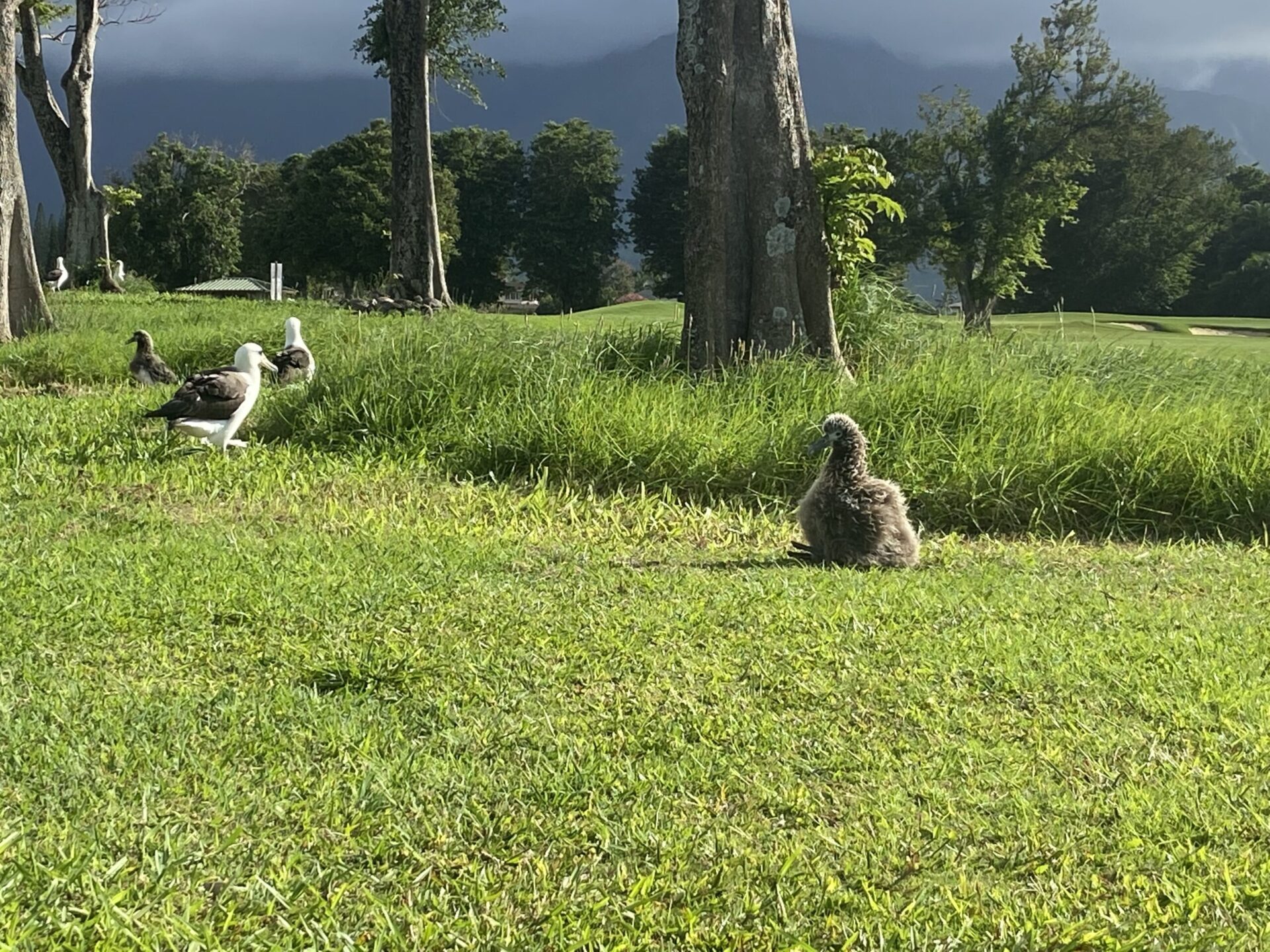The Laysan Albatross has a home in Princeville, a community on the North Shore of Kaua’i. If you are in town between late January and July or August, you may catch sight of the fluff-ball chicks or of them taking their first flight.
It is quite a thing. So special to have these beautiful birds return to Princeville each year around November. The adults wait for their mates or in uncommon cases, look for a new one. Some of these large seabirds don’t make it back to shore for many reasons, such as the detrimental consumption of plastic and fishing lines out at sea. Long-line fishing can have thousands of hooks over kilometres that the birds get caught in while diving for food. This is a worldwide problem, for all species of Albatross and other birds.
When our family comes to visit in the Spring we always go take a look at the chicks, where they are and how they are doing. This year, we got to watch the adults in their mating dance. They are either pre-breeders or first-time breeders, according to Audubon. Seeing the Albatross and especially the chicks this time of year in Princeville is so special as they nest right in the open, near people’s homes, by a tree in the cul de sac, or on the golf course. Visitors are respectable and keep a distance. The many signs around the area help.



The adults fly into the Hawaiian islands around November, ready to mate when they are around eight years of age. While the male flies off to feed, the female of the mating pair will begin to make the nest, which they finish together. After the egg is laid, the male will sit on it. The average time is two months and the first chicks hatch in January. The parents will feed the chicks in turn, staying away longer and longer as they fly further and further to find food.
The chicks will start looking around for where they will simply leap off these hundred-feet bluffs and take flight. Before then they will practice. Sometimes they don’t make it on the first attempt and I imagine it takes some guts and instincts to know when it’s time.
Once the albatross chicks head out over the Pacific Ocean, they don’t touch land for the next several years. Then they return to where they were hatched. It’s pretty amazing and such a privilege to witness these beautiful birds.
Laysan Albatross (Phoebastria immutabilis) or Mōlī in hawaiian
- Spend November to July in Kaua’i
- Eggs are laid in late November, with a clutch size of one, which takes about 65 days to hatch
- 165 days to fledging or first flight and after that, they will stay at sea for three to five years before returning to shore to mate.
- Adult weight : 6 lbs
- Adult wing-span : nearly 7 feet
- Diet and feed behaviour : small squid primarily, also fish, fish eggs, and crustaceans. They have night vision for feeding at night, when the squid come closer to the surface
- Oldest known : 65+ years (the birds get tagged before they fly off) – the oldest known wild banded Laysan Albatross nests on Midway Island and the most recent record I found was from 2021, placing this female at 70.
If you’re interested to learn more about these beautiful and amazing birds who call Kaua’i and the Hawai’ian Islands home, check out Holi Moli: Albatross and Other Ancestors by Hob Osterlund.
